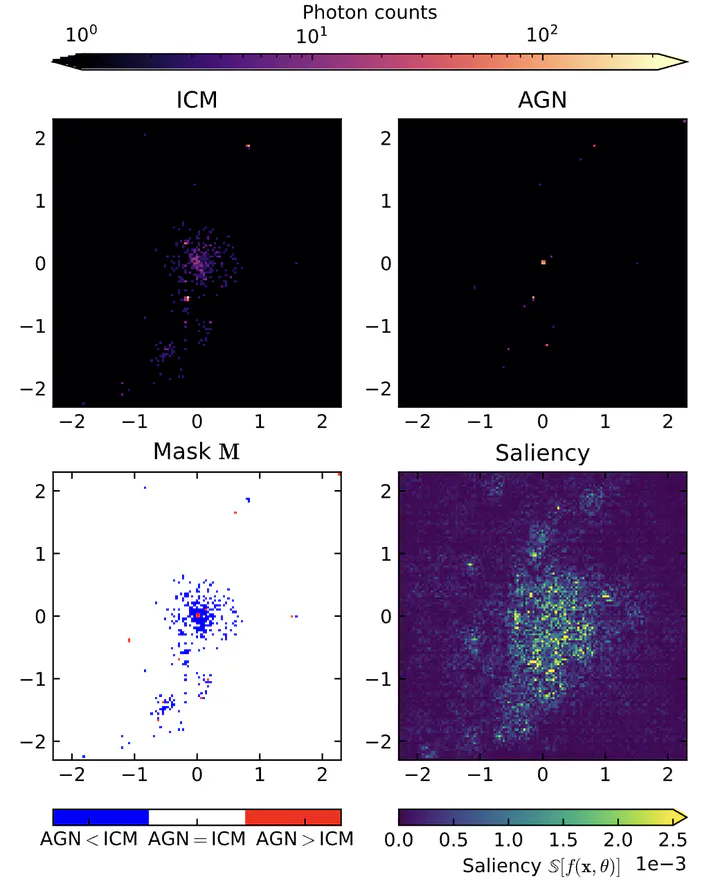Benchmarks and explanations for deep learning estimates of X-ray galaxy cluster masses
Sep 1, 2023· ,,,,,·
1 min read
,,,,,·
1 min read
Matthew Ho
John Soltis
Arya Farahi
Daisuke Nagai
August Evrard
Michelle Ntampaka

Abstract
We evaluate the effectiveness of deep learning (DL) models for reconstructing the masses of galaxy clusters using X-ray photometry data from next-generation surveys. We establish these constraints using a catalogue of realistic mock eROSITA X-ray observations which use hydrodynamical simulations to model realistic cluster morphology, background emission, telescope response, and active galactic nucleus (AGN) sources. Using bolometric X-ray photon maps as input, DL models achieve a predictive mass scatter of $σ _łn M_mathrm500c = 17.8~ m̊ per cent$, a factor of two improvements on scalar observables such as richness Ngal, 1D velocity dispersion σv,1D, and photon count Nphot as well as a 32 per cent improvement upon idealized, volume-integrated measurements of the bolometric X-ray luminosity LX. We then show that extending this model to handle multichannel X-ray photon maps, separated in low, medium, and high energy bands, further reduces the mass scatter to 16.2 per cent. We also tested a multimodal DL model incorporating both dynamical and X-ray cluster probes and achieved marginal gains at a mass scatter of 15.9 per cent. Finally, we conduct a quantitative interpretability study of our DL models and find that they greatly down-weight the importance of pixels in the centres of clusters and at the location of AGN sources, validating previous claims of DL modelling improvements and suggesting practical and theoretical benefits for using DL in X-ray mass inference.
Type
Publication
mnras
Add the full text or supplementary notes for the publication here using Markdown formatting.